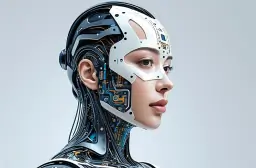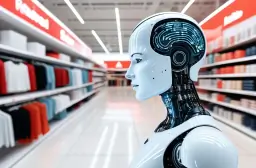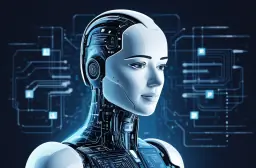Artificial Intelligence and Human Rights: Ethics & Fairness

Table of Contents
Artificial Intelligence and Human Rights: Ethics & Fairness
In an age where artificial intelligence is transforming nearly every aspect of life, from healthcare to policing, we find ourselves asking hard questions about ethics, dignity, and fairness. AI is no longer just a futuristic concept—it’s already shaping the world we live in. But how do we ensure that it respects our most fundamental values?
As AI-powered systems begin to make decisions that once belonged to humans—like who gets a loan, how people are monitored, or which news we see—there’s a growing need to examine the relationship between artificial intelligence and human rights. This relationship is complex, powerful, and, if left unchecked, potentially dangerous.
What happens when intelligent systems challenge the rights they’re supposed to serve? That’s the question we aim to explore—because if AI is to serve humanity, then it must be held accountable to the very rights that define our shared human experience.
Understanding the Link Between AI and Human Rights
The connection between AI and human rights is more than just a topic for academics—it’s a critical issue for everyone. As we automate systems that impact access to jobs, housing, justice, and safety, we must ensure that these systems operate fairly and uphold fundamental rights.
Human rights refer to the universal principles that protect human dignity, freedom, and equality. These rights are guaranteed regardless of nationality, race, gender, or beliefs. When AI systems are built or trained without attention to these principles, they can reinforce or even deepen existing inequalities.
We’ve seen real-world cases where algorithms used in hiring or law enforcement exhibited algorithmic bias. This bias isn’t random—it often reflects the same systemic discrimination that exists in society. That’s why tying artificial intelligence to human rights frameworks is vital.
The Role of Ethical AI in a Democratic Society

As democratic societies, we are founded on the principle that all people are equal and deserve fair treatment. In this context, ethical AI isn’t just a technical goal—it’s a moral obligation. We need human-centric AI that puts people first.
AI ethics involves principles like:
- Transparency: People should understand how AI systems make decisions.
- Accountability: There must be someone responsible when AI causes harm.
- Inclusivity: Systems should work fairly for everyone, not just the majority.
By integrating these values, we can build responsible AI that strengthens, rather than threatens, the social fabric.
Why Fairness Is More Than Just Code
Many developers talk about “fairness in algorithms,” but fairness is not just a line of code. It’s a social and legal standard that evolves with context. What’s “fair” in one place might not be fair in another.
To ensure AI fairness, we need:
- Diverse data that doesn’t exclude minority voices.
- Evaluation of outcomes over time.
- Input from civil rights experts, not just engineers.
Fairness in AI means preventing discrimination and ensuring equal access. It’s about protecting civil liberties in every corner of the digital world.
Protecting Privacy Rights in the Age of AI
One of the most talked-about concerns in AI is privacy. With the rise of machine learning and neural networks, systems are collecting and analyzing vast amounts of personal data. But what happens to our privacy rights when that data is used without our consent?
Examples include:
- Facial recognition technology used in public without awareness.
- Predictive policing systems that surveil communities unfairly.
- Health tracking apps sharing sensitive data with third parties.
Data protection must be built into AI systems by default. Respecting privacy isn’t optional—it’s a right.
Algorithmic Bias and Discrimination: A Modern Civil Rights Issue
When AI systems are trained on biased data, they make biased decisions. This is called algorithmic bias, and it can have real consequences—from denying people jobs to unjustly flagging them for criminal behavior.
Key causes include:
- Incomplete or imbalanced training data.
- Lack of input from affected communities.
- Absence of fairness audits or bias testing.
AI systems must be tested and regulated like other critical infrastructures to prevent discrimination and uphold social justice.
Responsible AI and Accountability

When something goes wrong with an AI decision—say, an autonomous vehicle causes an accident—who is responsible? This question of AI accountability is at the heart of building trust.
We need:
- Clear policies outlining responsibility and liability.
- AI governance frameworks backed by law.
- Mechanisms for affected individuals to seek redress.
Without accountability, even the most “intelligent” systems can cause human rights violations with no consequences.
AI and Human Dignity: Preserving What Makes Us Human
At the core of universal rights lies the idea of human dignity. AI must be designed to serve—not replace or control—human beings. Whether it’s a robot assisting the elderly or a chatbot guiding a mental health conversation, the system must honor the person it serves.
This means:
- Avoiding objectification or emotional manipulation.
- Ensuring consent and human oversight.
- Prioritizing empathy and ethical design.
AI is powerful, but human dignity must remain non-negotiable.
Transparency in AI: Opening the Black Box
One major challenge in deep learning and cognitive computing is the lack of transparency. These systems can be so complex that even their developers don’t fully understand how decisions are made.
To solve this:
- Use explainable AI (XAI) models that show reasoning steps.
- Document how models are trained and tested.
- Open systems to public and regulatory review.
Transparent AI empowers users, builds trust, and helps protect human rights in every decision made by machines.
Inclusivity in AI Design and Deployment
AI should work for everyone—not just a select few. That means including people of different races, genders, abilities, cultures, and socioeconomic backgrounds in the design process.
We can promote inclusivity by:
- Recruiting diverse AI teams.
- Conducting community outreach and participatory design.
- Regularly auditing AI outcomes for impact on marginalized groups.
Inclusive design strengthens digital rights and reflects the values we stand for.
Regulation and Global AI Governance

To protect rights protection worldwide, we need strong AI governance. Countries and regions are now creating legal frameworks to regulate AI use in areas like surveillance, health, and finance.
Examples include:
- The EU’s AI Act.
- U.S. proposals for federal AI regulation.
- The United Nations’ call for global AI principles.
Global cooperation ensures that AI doesn’t become a tool of oppression or inequality but a force for shared progress.
The Role of Civil Society and Activism
Civil society plays a vital role in holding tech companies and governments accountable. Organizations that focus on AI ethics and human rights bring transparency to AI’s risks and impacts.
We’ve seen movements push back against facial recognition, fight algorithmic injustice, and demand rights-based AI design. These efforts help shape the future.
It’s a reminder that the fight for fairness doesn’t just happen in code—it happens in courtrooms, boardrooms, and city streets.
Ethical Guidelines and Industry Standards
Several organizations now offer ethical guidelines for AI development, including:
- IEEE’s Ethically Aligned Design.
- Google’s AI Principles.
- UNESCO’s AI Ethics Recommendations.
These guidelines offer best practices to avoid harm, respect autonomy, and support fairness. But voluntary principles are not enough. They must be paired with laws, audits, and user empowerment tools.
The Future of Human-Centric AI
As we move forward, we must center AI on human welfare. This means shifting away from purely profit-driven models toward solutions that address inequality, support mental health, and expand education.
Future innovations should:
- Empower local communities.
- Support sustainable development goals.
- Reflect values like freedom, justice, and equality.
This is the essence of human-centric AI—technology that enhances, not erodes, our shared humanity.
Educational and Workforce Impacts
The rise of AI affects not just rights but livelihoods. As automation changes how we work, we must protect the right to meaningful employment, fair pay, and lifelong learning.
Key strategies include:
- Investing in digital literacy and upskilling.
- Creating inclusive policies for AI-augmented jobs.
- Supporting workers affected by automation with safety nets.
AI and human rights go hand in hand in the economy of the future.
AI in Crisis and Humanitarian Contexts
AI can play a critical role in crisis situations—like disaster relief or refugee support. But these systems must respect human dignity and not exploit vulnerable populations.
Ethical use includes:
- Protecting identity and sensitive data.
- Avoiding surveillance or profiling.
- Ensuring informed consent.
We must use AI to support, not control, people in need.
FAQs
What are the human rights risks of AI?
AI can threaten privacy, lead to discrimination, and deny people access to justice, jobs, or services if used unfairly or without oversight.
How can AI be made fair and inclusive?
Through diverse data, transparent models, and inclusive design practices that reflect social justice and human dignity.
What role does transparency play in ethical AI?
Transparency helps users understand AI decisions, builds trust, and prevents abuse of power by making systems accountable.
Is regulation the best solution to AI harms?
Regulation is essential but must be paired with civil action, education, and ethical innovation to fully protect human rights.
Can AI and human rights work together?
Yes. With the right frameworks, AI can actually strengthen rights—expanding access, improving healthcare, and supporting equality.
Conclusion
As artificial intelligence becomes more powerful, the responsibility to ensure it supports human rights grows with it. By building systems that respect fairness, privacy, and dignity, we’re not just protecting ourselves—we’re shaping the future of humanity.
Let’s not wait for injustice to be automated. Let’s build AI that reflects our best values and serves all people, equally and justly.
Key Takeaways:
- Artificial intelligence and human rights must be deeply connected through law, ethics, and design.
- Fairness, transparency, and accountability are essential in responsible AI.
- Civil society, education, and regulation play key roles in shaping ethical technology.
- Human-centric AI is the future—and we all have a part in building it.
Popular Tags
ADS SPACE HERE


